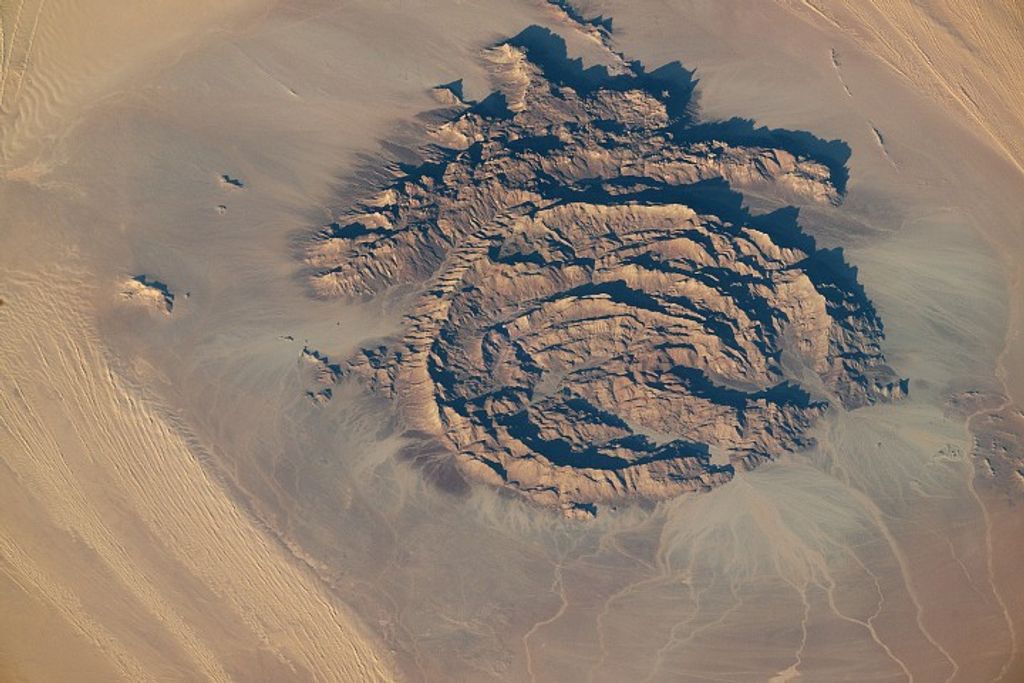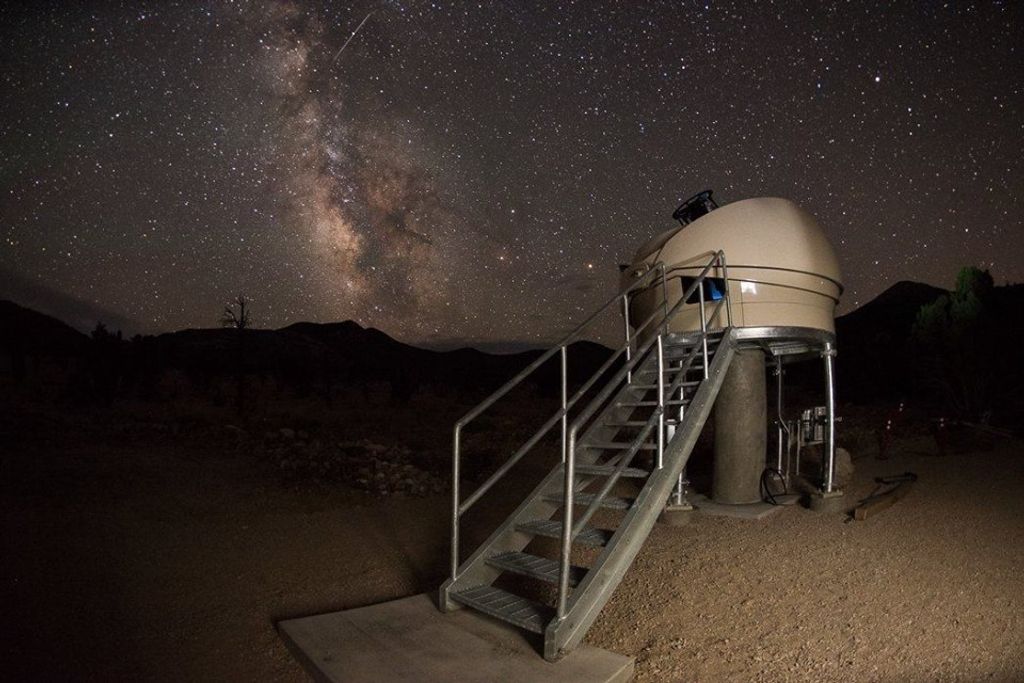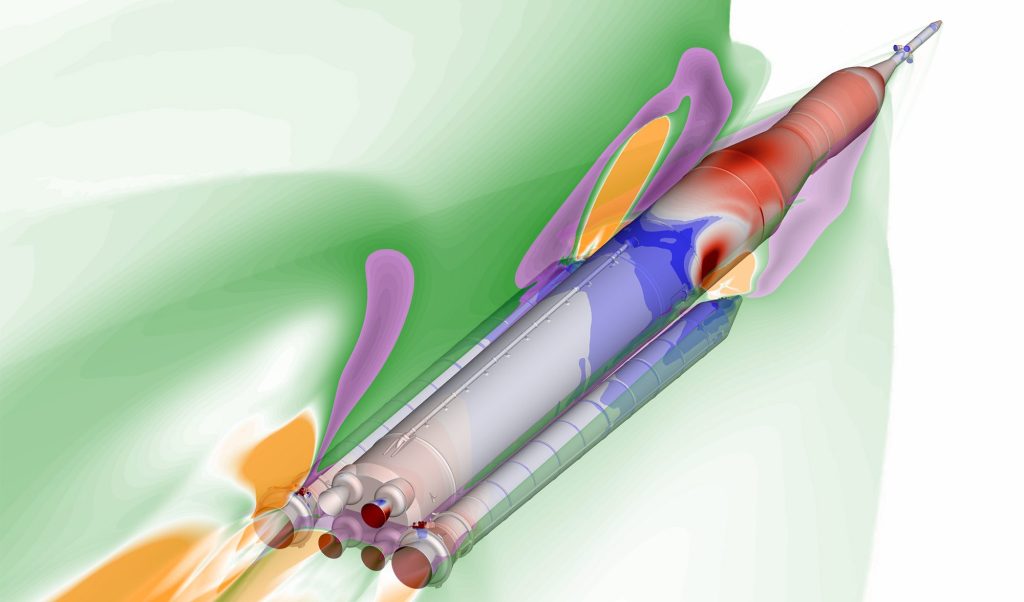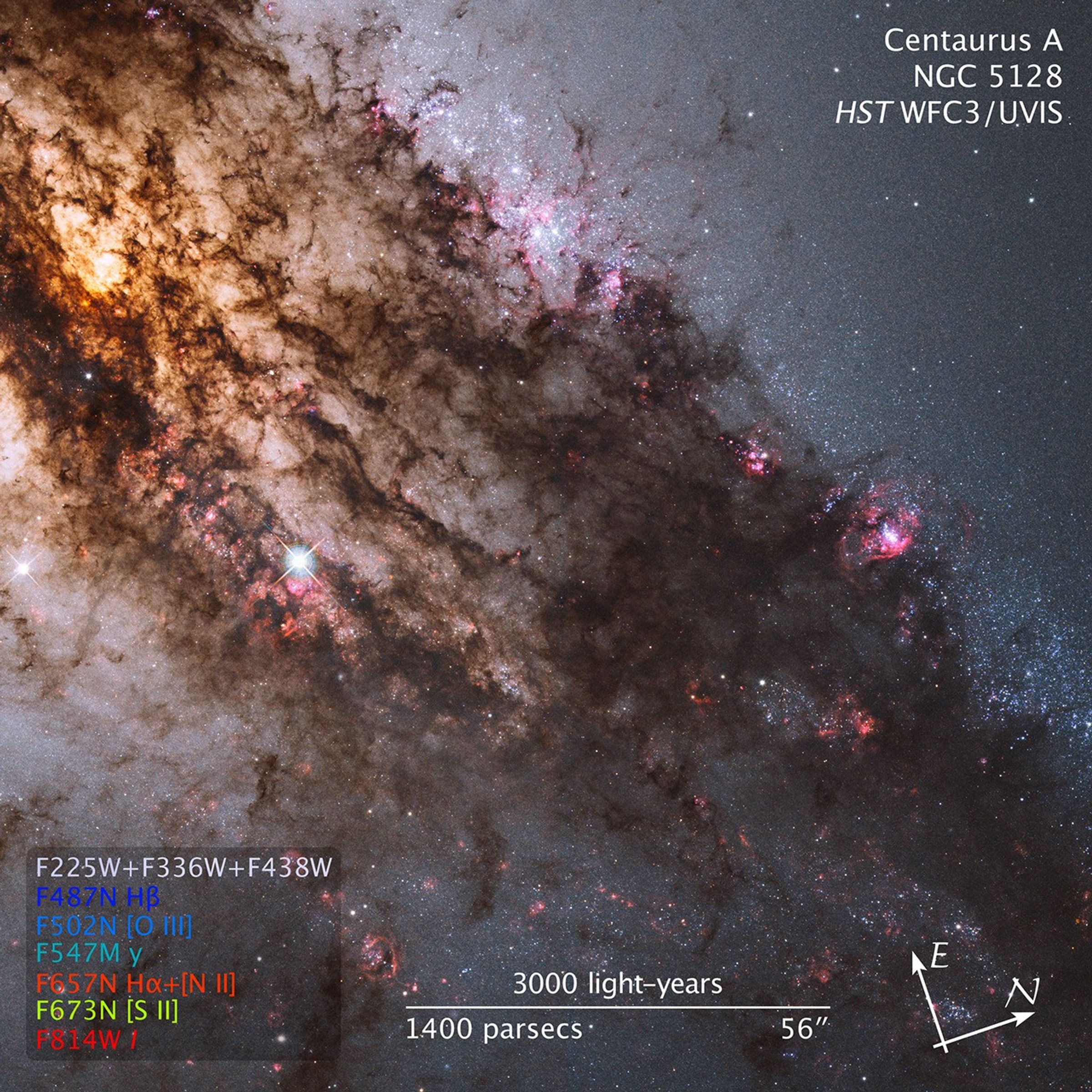1 min read
Active Galaxy Centaurus A

Resembling looming rain clouds on a stormy day, dark lanes of dust crisscross the giant elliptical galaxy Centaurus A.
Hubble's panchromatic vision, stretching from ultraviolet through near-infrared wavelengths, reveals the vibrant glow of young, blue star clusters and a glimpse into regions normally obscured by the dust.
The warped shape of Centaurus A's disk of gas and dust is evidence for a past collision and merger with another galaxy. The resulting shockwaves cause hydrogen gas clouds to compress, triggering a firestorm of new star formation. These are visible in the red patches in this Hubble close-up.
At a distance of just over 11 million light-years, Centaurus A contains the closest active galactic nucleus to Earth. The center is home for a supermassive black hole that ejects jets of high-speed gas into space, but neither the supermassive black hole or the jets are visible in this image.
This image was taken in July 2010 with Hubble's Wide Field Camera 3.
About the Object
- R.A. PositionR.A. PositionRight ascension – analogous to longitude – is one component of an object's position.13h 25m 27.61s
- Dec. PositionDec. PositionDeclination – analogous to latitude – is one component of an object's position.-43° 1' 8.79"
- ConstellationConstellationOne of 88 recognized regions of the celestial sphere in which the object appears.Centaurus
- DistanceDistanceThe physical distance from Earth to the astronomical object. Distances within our solar system are usually measured in Astronomical Units (AU). Distances between stars are usually measured in light-years. Interstellar distances can also be measured in parsecs.1 million light-years (3.4 parsecs)
- DimensionsDimensionsThe physical size of the object or the apparent angle it subtends on the sky.This image is 2.7 arcminutes (8,500 light-years or 2,600 parsecs) wide.
About the Data
- Data DescriptionData DescriptionProposal: A description of the observations, their scientific justification, and the links to the data available in the science archive.
Science Team: The astronomers who planned the observations and analyzed the data. "PI" refers to the Principal Investigator.The image was created from Hubble data from proposal 11360: R. O'Connell (University of Virginia), B. Balick (University of Washington), H. Bond (STScI), D. Calzetti (University of Massachusetts), M. Carollo (Swiss Federal Institute of Technology, Zurich), M. Disney (University of Wales, College of Cardiff), M. Dopita (Australian National University), J. Frogel (Ohio State University Research Foundation), D. Hall (University of Hawaii), J. Holtzman (New Mexico State University), P. McCarthy (Carnegie Institution of Washington), F. Paresce (European Southern Observatory, Germany), A. Saha (NOAO/AURA), J. Silk (University of Oxford), A. Walker (NOAO/CTIO), B. Whitmore (STScI), R. Windhorst (Arizona State University), and E. Young (University of Arizona).
Science team: S. Kaviraj (Imperial College London and the University of Oxford), R. Crockett (University of Oxford), and J. Silk (University of Oxford).
- InstrumentInstrumentThe science instrument used to produce the data.HST>WFC3/UVIS
- Exposure DatesExposure DatesThe date(s) that the telescope made its observations and the total exposure time.July 6-17, 2010, Exposure Time: 4.8 hours
- FiltersFiltersThe camera filters that were used in the science observations.F225W (U), F336W (U), F438W (B), F487N (H-beta), F502N ([O III]), F547M (y), F657N (H-alpha + [N II]), F673N ([S II]), and F814W (I)
- Object NameObject NameA name or catalog number that astronomers use to identify an astronomical object.Centaurus A, Cen A, NGC 5128
- Object DescriptionObject DescriptionThe type of astronomical object.Elliptical/Active Galaxy
- Release DateJune 16, 2011
- Science ReleaseFirestorm of Star Birth in the Active Galaxy Centaurus A
- CreditNASA, ESA, and the Hubble Heritage (STScI/AURA)-ESA/Hubble Collaboration; Acknowledgment: R. O'Connell (University of Virginia) and the WFC3 Scientific Oversight Committee

This image is a composite of separate exposures acquired by the WFC3 instrument on HST. Several filters were used to sample broad and narrow wavelength ranges. The color results from assigning different hues (colors) to each monochromatic (grayscale) image associated with an individual filter. In this case, the assigned colors are: White: F225W (U) + F336W (U) + F438W (B) Blue: F487N (H-beta) Cyan: F502N ([O III]) Aqua: F547M (y) Red/orange: F657N (H-alpha + [N II]) Yellow/green: F673N ([S II]) Red: F814W (I)

Share
Details
Claire Andreoli
NASA’s Goddard Space Flight Center
Greenbelt, Maryland
claire.andreoli@nasa.gov






























